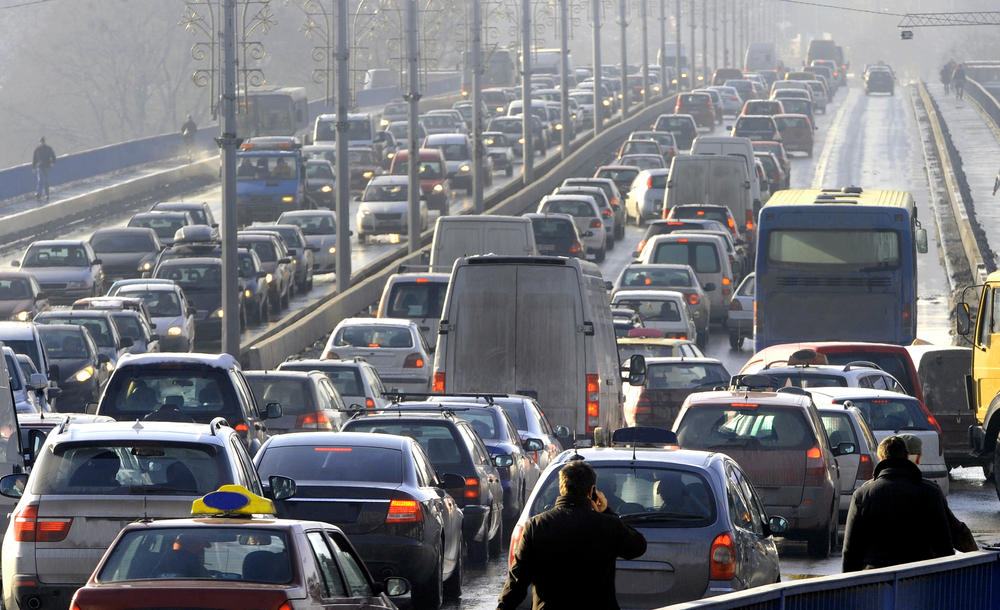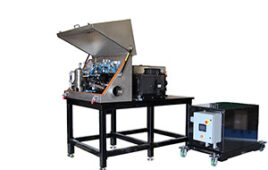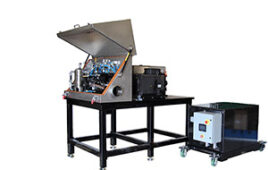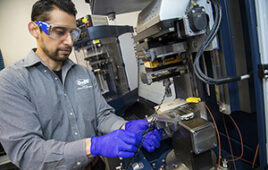
A fleet of driverless cars working together to keep traffic moving smoothly can improve overall traffic flow by at least 35 percent, researchers have shown.
The researchers, from the University of Cambridge, programmed a small fleet of miniature robotic cars to drive on a multi-lane track and observed how the traffic flow changed when one of the cars stopped.
When the cars were not driving cooperatively, any cars behind the stopped car had to stop or slow down and wait for a gap in the traffic, as would typically happen on a real road. A queue quickly formed behind the stopped car and overall traffic flow was slowed.
However, when the cars were communicating with each other and driving cooperatively, as soon as one car stopped in the inner lane, it sent a signal to all the other cars. Cars in the outer lane that were in immediate proximity of the stopped car slowed down slightly so that cars in the inner lane were able to quickly pass the stopped car without having to stop or slow down significantly.
Additionally, when a human-controlled driver was put on the ‘road’ with the autonomous cars and moved around the track in an aggressive manner, the other cars were able to give way to avoid the aggressive driver, improving safety.
The results, to be presented today at the International Conference on Robotics and Automation (ICRA) in Montréal, will be useful for studying how autonomous cars can communicate with each other, and with cars controlled by human drivers, on real roads in the future.
“Autonomous cars could fix a lot of different problems associated with driving in cities, but there needs to be a way for them to work together,” said co-author Michael He, an undergraduate student at St John’s College, who designed the algorithms for the experiment.
“If different automotive manufacturers are all developing their own autonomous cars with their own software, those cars all need to communicate with each other effectively,” said co-author Nicholas Hyldmar, an undergraduate student at Downing College, who designed much of the hardware for the experiment.
The two students completed the work as part of an undergraduate research project in summer 2018, in the lab of Dr Amanda Prorok from Cambridge’s Department of Computer Science and Technology.
Many existing tests for multiple autonomous driverless cars are done digitally, or with scale models that are either too large or too expensive to carry out indoor experiments with fleets of cars.
Starting with inexpensive scale models of commercially-available vehicles with realistic steering systems, the Cambridge researchers adapted the cars with motion capture sensors and a Raspberry Pi, so that the cars could communicate via wifi.
They then adapted a lane-changing algorithm for autonomous cars to work with a fleet of cars. The original algorithm decides when a car should change lanes, based on whether it is safe to do so and whether changing lanes would help the car move through traffic more quickly. The adapted algorithm allows for cars to be packed more closely when changing lanes and adds a safety constraint to prevent crashes when speeds are low. A second algorithm allowed the cars to detect a projected car in front of it and make space.
They then tested the fleet in ‘egocentric’ and ‘cooperative’ driving modes, using both normal and aggressive driving behaviours, and observed how the fleet reacted to a stopped car. In the normal mode, cooperative driving improved traffic flow by 35% over egocentric driving, while for aggressive driving, the improvement was 45%. The researchers then tested how the fleet reacted to a single car controlled by a human via a joystick.
“Our design allows for a wide range of practical, low-cost experiments to be carried out on autonomous cars,” said Prorok. “For autonomous cars to be safely used on real roads, we need to know how they will interact with each other to improve safety and traffic flow.”
In future work, the researchers plan to use the fleet to test multi-car systems in more complex scenarios including roads with more lanes, intersections and a wider range of vehicle types.




